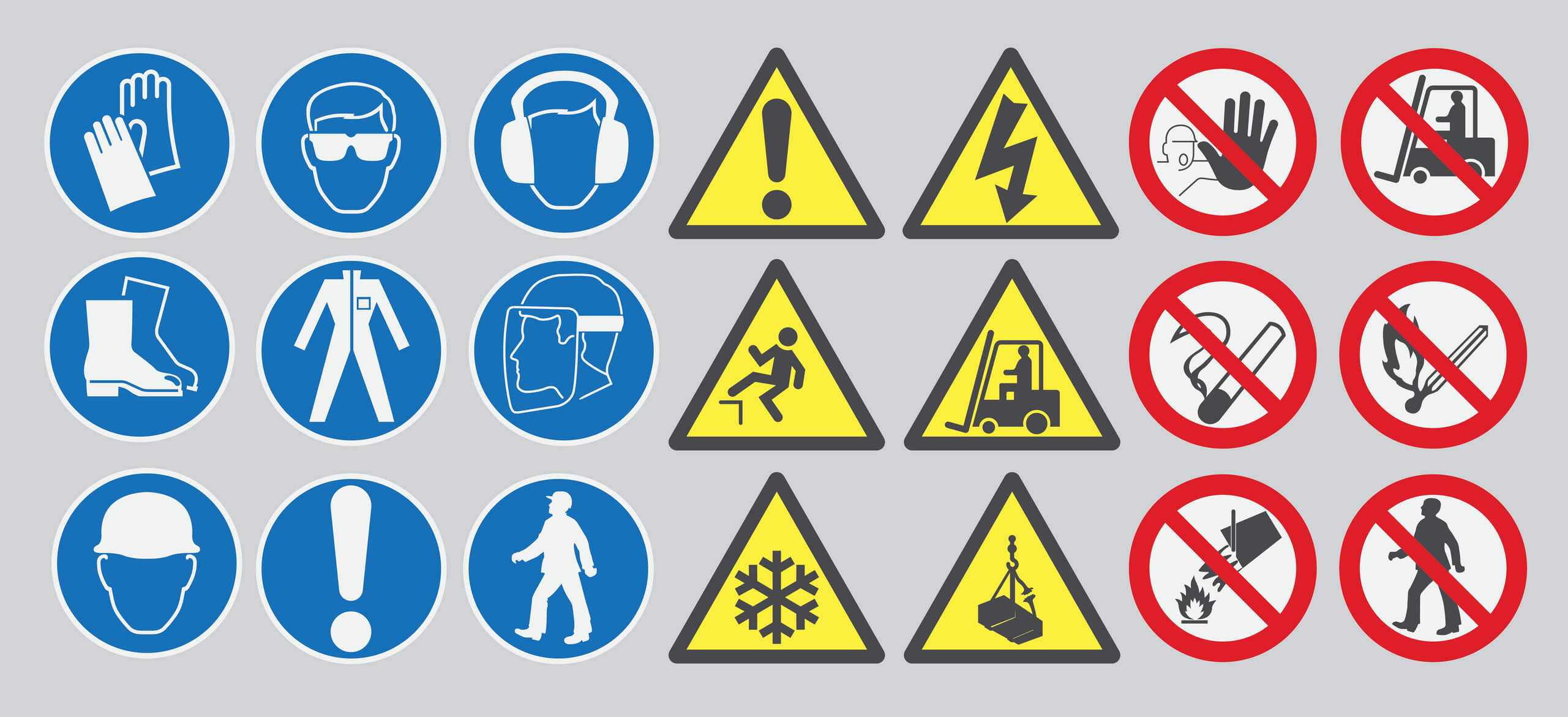10 Common OSHA Violations: Protect Your Workplace
Prioritizing workplace safety is crucial for employees and employers. Both are responsible for reducing workplace accidents and injuries. However, employers are in charge of protecting employees and avoiding costly fines.
Just imagine your workplace is busy, and everything seems like it’s running smoothly. But, underneath this veneer of productivity, your company might be unknowingly breaking OSHA safety rules. These violations may put you and your colleagues at risk, which leads to severe hazardous conditions, potential legal issues, and sometimes fatality. So, it is crucial to look at the annual list of the top most frequently cited OSHA violations.
10 OSHA Safety Rules Your Company Is Probably Violating
In this article, you will learn about the ten common safety rules that your company may be violating, as well as the actionable tips to stay compliant. Ready to find out if you are at risk? Let’s get started!
1: Failure to Provide Proper Fall Protection
Falls are the leading cause of workplace injuries. OSHA standard 1926.501 declares how to install the fall protection system, which one is appropriate, and where they are necessary to use. Most employers fail to follow the OSHA laws and violate them. As an employee, you need to know this standard aims to protect workers who work on vertical and horizontal walking surfaces that are more than 6 feet from the ground level. So, you need to check whether your company relies on outdated or inappropriate fall protection or follows OSHA standards.
You have to make sure that you are working in a safe condition, such as the presence of proper guardrails, safety nets, and personal fall arrest systems. If your company fails to provide these fall protection equipment, it means they violate the OSHA rules.
2: Poor Hazard Communication
First, you have to think about how well you communicate with your supervisors or employers. Do they respond to you regarding your safety assurances? As an employee, you must check that all your hazardous materials are properly labeled. Ensure that safety data sheets (SDS) are also available to keep you updated about chemical hazards and how to handle them. It will let you know whether your employer follows the OSHA safety regulations or not.
Additionally, you can also make sure that your colleagues receive training on Hazard Communication to stay compliant. A self-assessment quiz helps to identify that your company does not violate OSHA laws.
3: Improper use of Ladders
Using safe ladders in the workplace is a general requirement that every employer should consider. Ladders are often taken for granted in the workplace, but improper use is a common violation. OSHA has set specific regulations regarding the types, use, and conditions of ladders. For instance, using a ladder that is too short for the task, overloading it, or using it on unstable ground can all lead to serious injuries.
You need to make sure that employees are aware of adequate levels to use ladders safely. Also, you may inspect all ladders to ensure they are free from slipping hazards such as oil or grease or any other form of danger.
4: Respiratory Protection
Respiratory protection is critical to ensure the environment is free from harmful dust, fumes, vapors, or gases. This OSHA standard requires employers to provide appropriate respirators and ensure workers use them correctly. Perhaps your company does not follow the safety guidelines and neglects to maintain respirators.
You can conduct respirator fit testing to ensure the respirator is working properly and determine whether your employer violates OSHA regulations. You also need to ensure employees use the correct respirator and are in good working condition before they are exposed to hazards.
5: Scaffolding Safety Violations
Scaffolding is the most important tool for construction to support employees and materials while they work at heights. But, it also poses significant hazards if not used correctly. OSHA requires that scaffolds be erected and dismantled under the supervision of a competent person and that workers be trained on proper use.
To ensure your employers are not violating the OSHA laws, you need to inspect scaffolding before each shift. Make sure it is not damaged or assembled properly. Qualified personnel must inspect it regularly and keep employers updated in case of any weakened or damaged scaffold.
6: Control of Hazardous Energy (Lockout/Tagout)
The lockout and tagout standard is designed to prevent unintentional machine starts during maintenance. Ignoring this may result in serious injuries or even fatalities. OSHA recorded this standard among the most common violations. This is because many companies do not have proper procedures to implement them or fail to enforce them, which may result in dangerous working conditions.
Your employers must create & enforce energy control programs. Ensure that all the employees are trained on lockout and tagout procedures to control hazardous energy on your work site.
7: Powered Industrial Truck Violations
Powered industrial trucks (PITs), such as forklifts, are common in warehouses and construction sites. But they come with strict safety requirements. This OSHA violation often includes inadequate training of operators, failure to inspect equipment before use, and improper use of the trucks. It may lead to accidents involving workers being struck by or crushed under forklifts.
As an employer, you can also inspect that the forklift must load to its weight capacity. Make sure that employers must provide proper forklift guidelines to every employee to avoid a powered industrial truck violation. To reduce injuries, ensure forklifts are operated by certified operators.
8: Fall Protection (Training Requirements)
Providing proper fall protection training is also important. OSHA allows employers to ensure all workers are trained to recognize fall hazards and know how to properly use a fall protection system. Beyond fall protection physical measures, providing training is key to reducing the most common OSHA violations that can lead to serious accidents.
To reduce this OSHA violation, adequate training must be provided to all employees to minimize the fall risk at work sites. Make sure your employers implement comprehensive fall protection training programs to educate their workers.
9: Eye and Face Protection
OSHA requires that employers provide appropriate eye and face protection when workers are exposed to hazards like flying particles, molten metal, chemicals, or light radiation. Personal Protective Equipment (PPE) is the first line of defense against workplace hazards. It’s easy to assume that providing gloves, goggles, and helmets is enough, but there’s more to it than just handing out equipment. But are you sure your PPE program is fully compliant with OSHA regulations?
Take a few minutes to walk through your workplace and inspect the PPE in use. Are employees using the right gear? Is it in good condition? If you’re unsure, it’s time to review the performance of your employers.
10: Insufficient Machine Guarding
Machines are essential in many industries, but they also pose significant risks. OSHA’s machine guarding standards are designed to protect employees from moving parts, flying debris, and other dangers, yet many companies fail to meet these standards. A common violation is the removal or bypassing of machine guards, often in the interest of speeding up production. However, this practice can lead to severe injuries, such as amputations or crushing injuries.
You need to take a look at the machine in your workplace to check all guards are in place and functioning properly. If you find any issue, report it to supervisors and employers immediately.
Conclusion
These are common OSHA standards that companies frequently violate. If you notice such violations at your workplace, it’s important to reach out to your supervisor and file a complaint. If the issue persists without improvement, you can contact OSHA anonymously to report the violations. When it comes to workplace safety, it’s always better to be safe than sorry.
Related Posts

EHS Reporting: Executives vs Workers Explained

10 Holiday Safety Tips You Must Know for 2025



